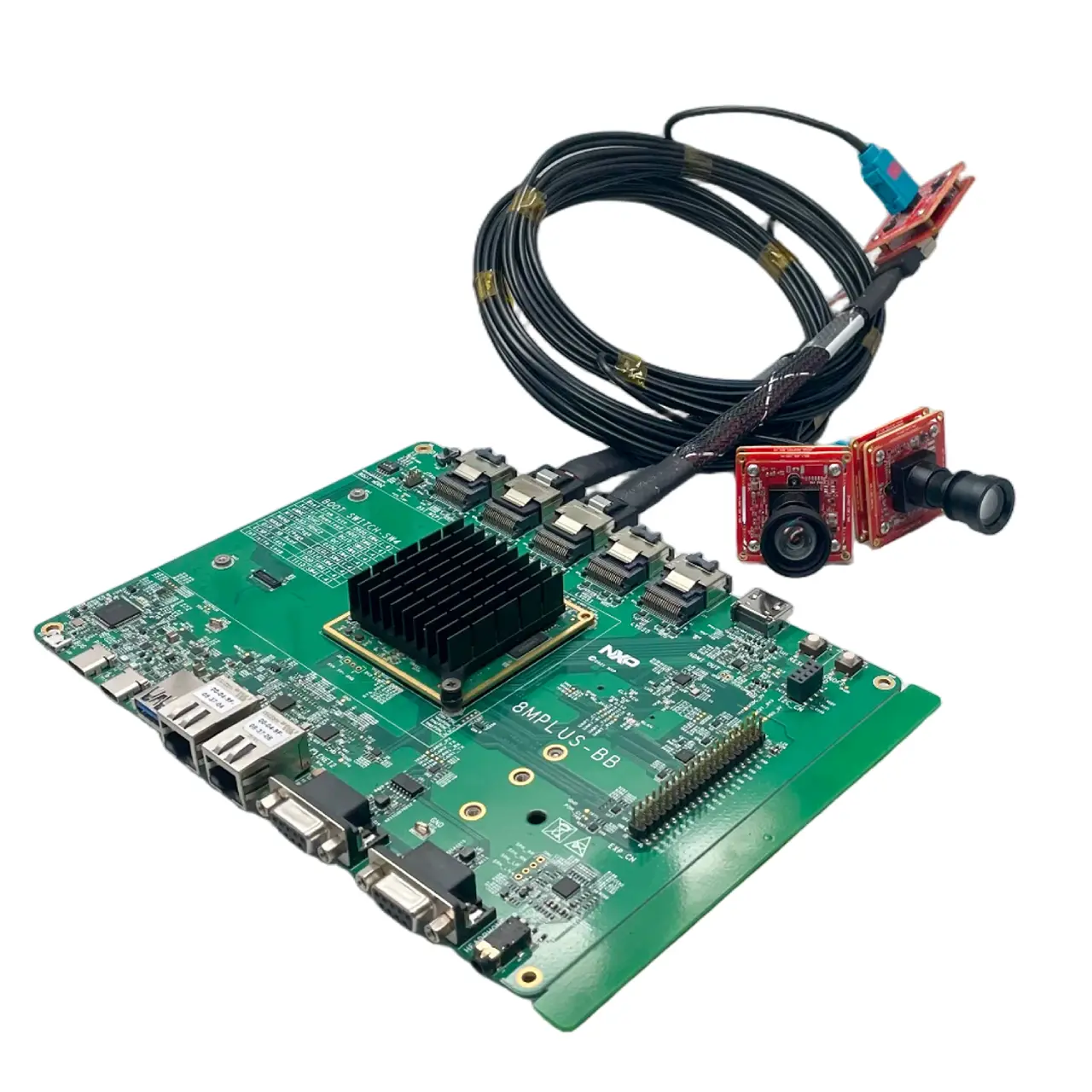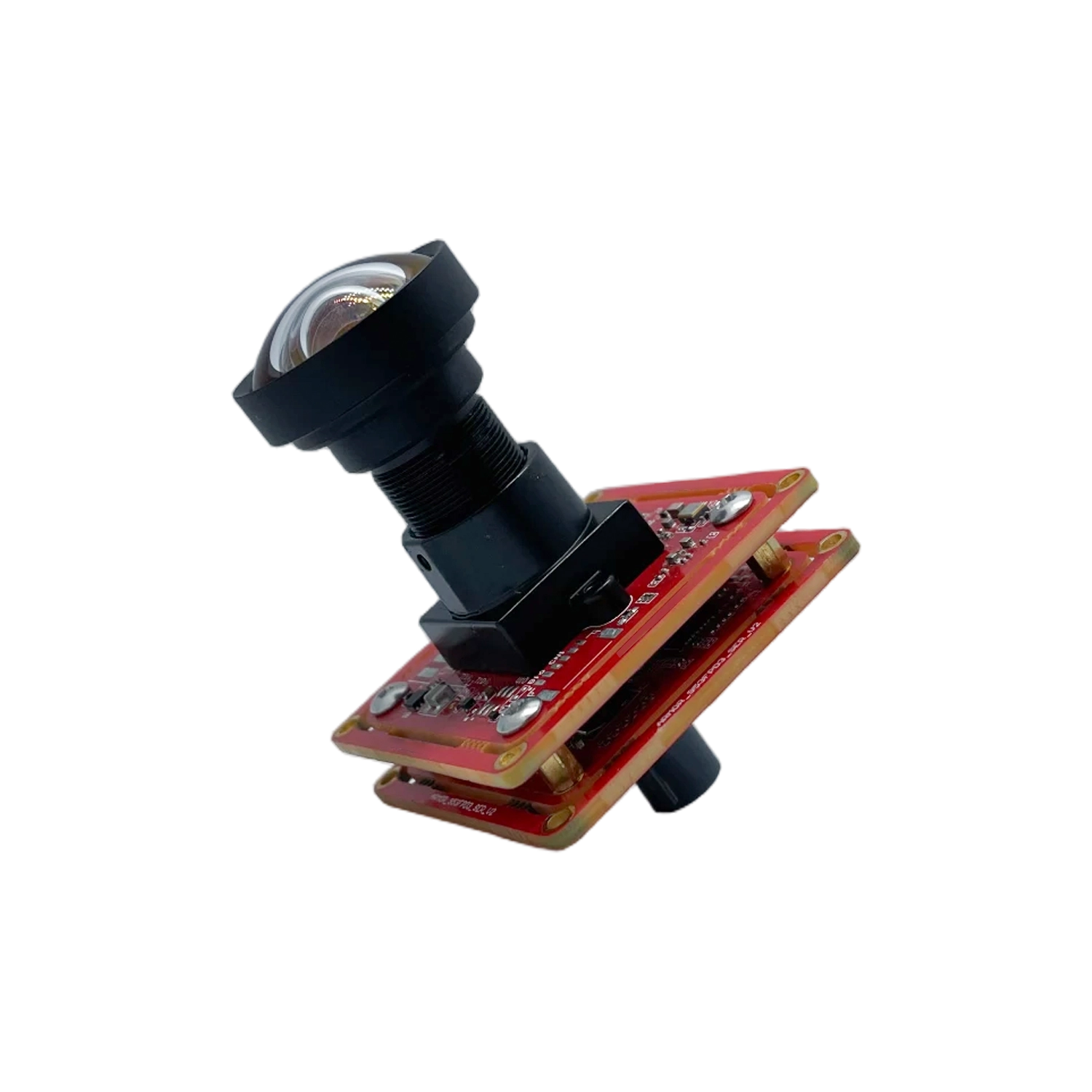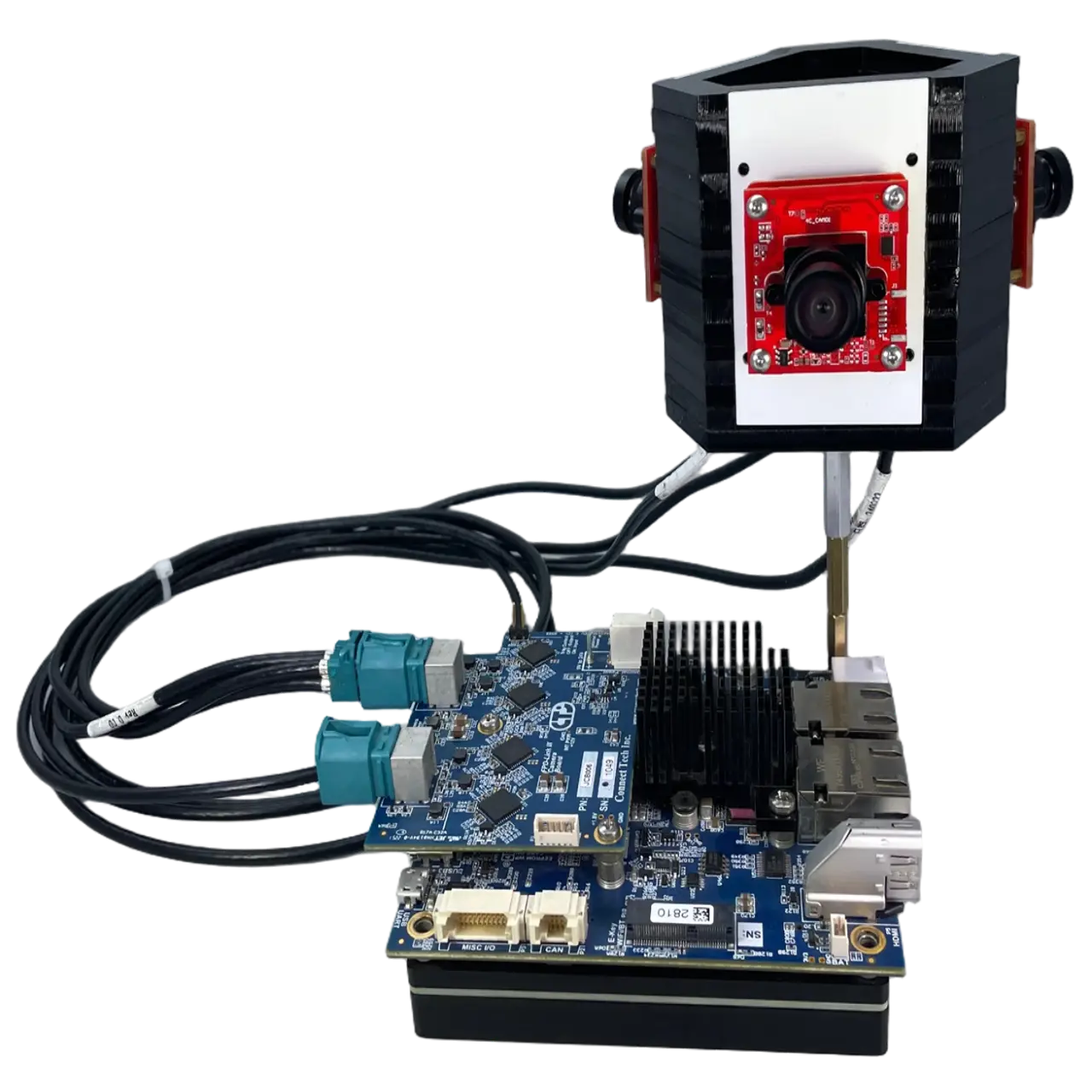How FPD-Link Cameras Improve Automotive Vision Systems
- Vadzo Imaging

- Oct 15
- 5 min read
Updated: Oct 28

The rise of advanced driver assistance systems (ADAS) and autonomous driving has made high-performance automotive imaging indispensable. FPD-Link cameras have become a cornerstone in modern automotive vision systems, enabling high-speed, low-latency video transmission for ADAS (Advanced Driver Assistance Systems) and autonomous driving platforms. Designed for long-distance, noise-immune data transfer, FPD-Link technology bridges the gap between vehicle-mounted sensors and centralized ECUs, ensuring every pixel of road intelligence reaches the processor in real time.
Vadzo Imaging, a pioneer in embedded and industrial camera solutions, offers camera modules engineered for reliability and performance in automotive environments. By integrating FPD-Link-based architectures, Vadzo ensures robust imaging pipelines that meet stringent automotive standards.
Why Automotive Vision Relies on FPD-Link Cameras
Advanced automotive functions like surround view, lane departure warning, pedestrian detection, and driver monitoring depend on the seamless synchronization of multiple high-resolution cameras. Conventional interfaces such as MIPI-CSI2 or LVDS face cable-length limitations and electromagnetic interference (EMI) issues when sensors are placed several meters from the ECU.
Vadzo's FPD-Link cameras solve these challenges by offering:
Extended transmission distance: up to 15 meters over coaxial or shielded twisted-pair cables.
Single-cable operation: combining video, bidirectional control data, and power (Power-over-Coax).
Low-latency communication: critical for real-time object detection and safety decisions.
Excellent EMI immunity: essential for high-voltage, high-noise automotive environments.
This makes FPD-Link the de facto standard for reliable multi-camera networks in ADAS and autonomous vehicles.
Architecture of an FPD-Link Camera Module
A typical FPD-Link camera module from Vadzo Imaging or equivalent designs includes:
Image Sensor: High-dynamic-range CMOS sensors that capture raw imaging data even in challenging lighting conditions.
Image Signal Processor: Automotive grade ISPs/SOCs that are compatible with the high performance sensor and supports capabilities such as Fusion HDR, Dewarping, LED Flicker Mitigation, etc.
Serializer IC: Converts sensor output (parallel or MIPI CSI-2) into serialized differential signals for transmission.
FPD-Link Transmission: High-speed differential signaling over a single coax or shielded pair cable, carrying both video and control.
Deserializer IC: Located near the ECU or SoC, reconstructing the video stream for downstream processing.
Automotive-grade Connectors: Robust and vibration-resistant connectors ensuring consistent data integrity.
This modular design makes FPD-Link cameras ideal for scalable integration into automotive perception architectures.
Multi-Camera FPD-Link Systems in Vehicles
In real-world vehicle designs, multi-camera FPD-Link systems provide 360° situational awareness by integrating multiple imaging nodes, such as:

Front-facing cameras for lane and object detection.
Rear-view cameras for parking and reverse assistance.
Side-mounted cameras (e-Mirrors) for blind-spot detection.
In-cabin cameras for driver and occupant monitoring.
Vadzo’s camera platforms are adaptable to such architectures, enabling synchronized image capture across serializers connected to a centralized deserializer hub. The result: real-time, multi-view imaging with frame-accurate synchronization, which is essential for ADAS and autonomous decision-making.
Key Benefits of FPD-Link Cameras in Automotive Vision
1. High Bandwidth with Ultra-Low Latency
FPD-Link III supports data rates up to 4.16 Gbps per lane, accommodating sensors up to 13 MP @ 60 fps. This ensures crystal-clear imaging for AI-based perception systems while maintaining sub-millisecond latency.
2. Simplified Wiring via Power-over-Coax (PoC)
By combining power, video, and control in one cable, FPD-Link cameras drastically reduce wiring complexity and vehicle weight, directly enhancing efficiency and cost optimization.
3. Superior EMI Immunity
Automotive environments expose electronics to substantial electromagnetic interference. FPD-Link’s differential signaling architecture ensures error-free data integrity even under severe EMI conditions.
4. Scalability and Flexibility
FPD-Link supports multiple camera nodes per ECU, allowing automakers to scale from entry-level driver assistance to fully autonomous vehicle platforms without redesigning the data backbone.
5. Compatibility and Reliability
Vadzo Imaging’s camera modules integrate high-quality components, ensuring reliability under extreme temperatures, vibrations, and humidity — key requirements in the automotive sector.
Deployment and Cost Considerations
The FPD-Link camera price varies depending on sensor specifications, serializer/deserializer chipset, and feature integration such as PoC or HDR support.
Typical factors influencing cost include:
Image sensor resolution and shutter type (rolling vs. global).
Serializer/deserializer generation (Gen3 or Gen4).
Cable type and connector quality.
Environmental ratings (AEC-Q100, IP67, etc.).
While FPD-Link systems may have a higher initial cost than MIPI-based modules, they deliver superior reliability, scalability, and signal integrity, making them the preferred choice for safety-critical automotive applications. Reach out to our experts for more details.
Vadzo’s Expertise in Automotive Imaging
Vadzo Imaging offers FPD-Link and MIPI-based camera modules tailored for automotive and industrial integration. Vadzo’s solutions provide high dynamic range imaging, compact form factors, and flexible connectivity options, supporting both prototype development and production-ready platforms.
Additionally, Vadzo’s software suite provides seamless camera control in Windows and Linux, simplifying camera evaluation and deployment for automotive engineers.
Conclusion
FPD-Link cameras are redefining automotive imaging by delivering long-distance, high-bandwidth, and EMI-robust data transmission through a single, efficient link. From lane detection to autonomous navigation, they form the communication backbone for next-generation automotive vision systems.
With Vadzo Imaging’s proven expertise in camera design and integration, automakers and ADAS developers can build reliable, high-performance imaging pipelines that accelerate the journey toward autonomous mobility.
Top 10 FAQs About FPD-Link Cameras
1. What is an FPD-Link camera?
An FPD-Link camera is a high-speed serial interface camera used in automotive and industrial systems for long-distance, low-latency video transmission over a single coaxial or shielded twisted-pair cable.
2. How does FPD-Link differ from MIPI CSI-2?
While MIPI CSI-2 is ideal for short PCB-level connections, FPD-Link supports transmission up to 15 m with built-in EMI protection and Power-over-Coax capabilities.
3. What are the main advantages of FPD-Link cameras in vehicles?
Long-distance connectivity, minimal latency, EMI immunity, single-cable design, and multi-camera synchronization make FPD-Link ideal for automotive environments.
4. Can FPD-Link transmit both video and control data?
Yes. FPD-Link supports bidirectional communication for video, I²C control, and even GPIO signaling through the same cable.
5. What is Power-over-Coax (PoC) in FPD-Link systems?
PoC enables the same coaxial cable to deliver both power and data, eliminating the need for separate power lines.
6. How many FPD-Link cameras can be connected to one ECU?
Depending on the deserializer IC, multiple camera serializers can be linked to a single ECU for multi-camera synchronization in surround-view or ADAS setups.
7. What resolutions are supported by FPD-Link cameras?
FPD-Link III supports up to 13 MP at 60 fps and beyond, suitable for machine vision and automotive applications. Vadzo provides plenty of products like Armor-1335CRO-FPD3 & FPD4, Armor-3C10CRS-FPD3 & FPD4, and more specifically for automotive vision.
8. Are Vadzo’s FPD-Link cameras automotive-grade?
Yes. Vadzo Imaging designs FPD-Link-compatible modules with automotive-grade components, ensuring reliability under extreme operating conditions.
9. Can FPD-Link cameras be used for non-automotive applications?
Absolutely. FPD-Link technology is also used in robotics, industrial inspection, and smart transportation systems requiring long-distance, low-latency imaging.
10. Does Vadzo provide software or integration support for FPD-Link cameras?
Yes. Vadzo offers a complete software suite and engineering support ecosystem for FPD-Link camera integration. The Vadzo team provides end-to-end assistance throughout the development cycle, from camera module selection and firmware customization to deserializer configuration and system-level validation, ensuring seamless integration into automotive or industrial vision platforms.





